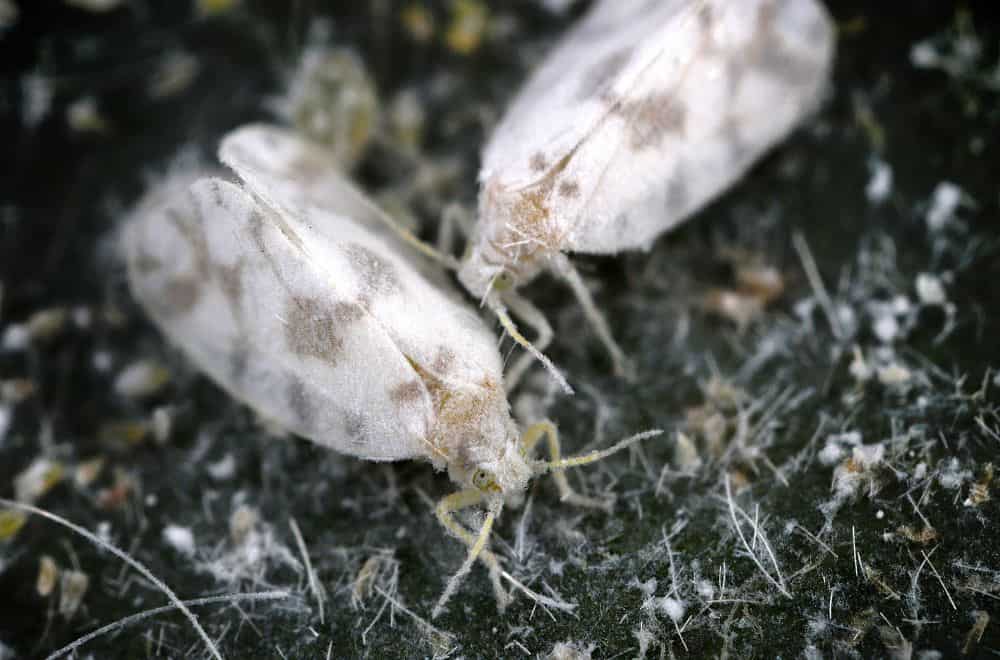Did you notice small white bugs that look like dust and lint in your house? Strange-looking bugs can be disgusting and worrying, especially if you have small kids and pets prone to allergic reactions.
The dust and lint-like bugs in your house could be anything from aphids, termites, and whiteflies to psocids and anything in between. Some of them are harmless, but most of these bugs can be destructive and may even bite seriously.
In this article, I will take you through white bugs that look like dust and lint commonly found inside and outside the house. You’ll also learn how to eliminate these pests to keep your home safe for your family and furry friends.
So, let’s get started!
Tiny White Bugs That Look Like Dust and Lint
1. Mealybugs
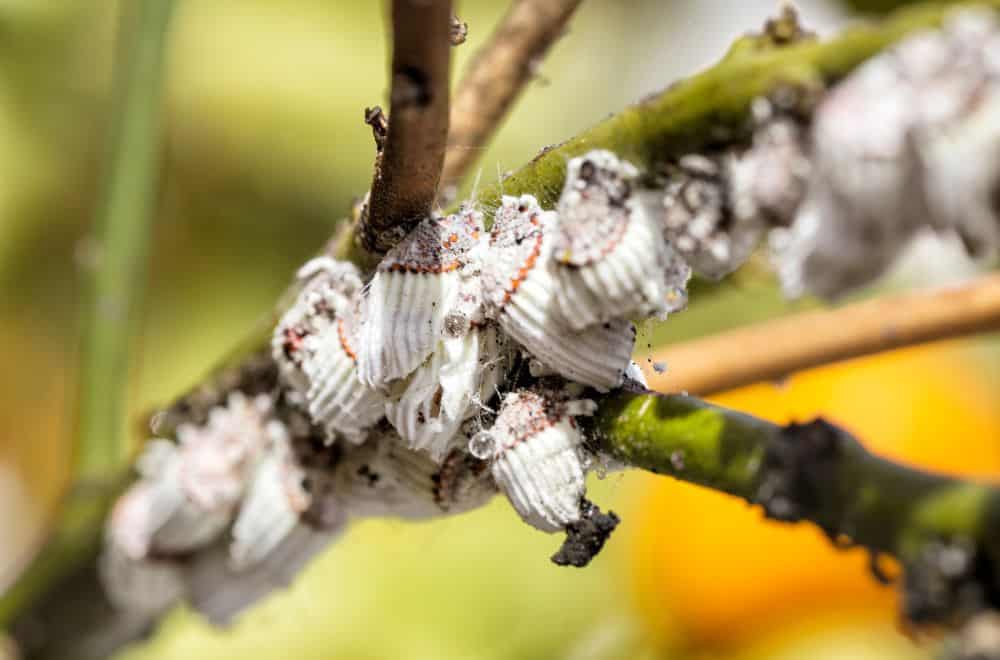
Mealybugs are mostly found on plants but can also proliferate on walls, windows and doors, and inside closets. These tiny oval-shaped bugs secrete a white powdery coating, giving them a dusty appearance.
Mealybugs live in groups and can quickly damage plants by infesting the leaves, stems, and roots. Excess moisture and nitrogen attract them, so overwatering and over-fertilizing your plants can cause a mealybug infestation.
You should get rid of these insect pests fast before they destroy your indoor and outdoor plants. That said, mealybugs are notoriously difficult to eliminate because they are tiny and hide inside leaf veins and stems.
The most effective way to eliminate these powdery white bugs is to wash the leaves and stems using insecticidal soap. Move infected plants away from other plants to avoid cross-contamination.
2. Whiteflies
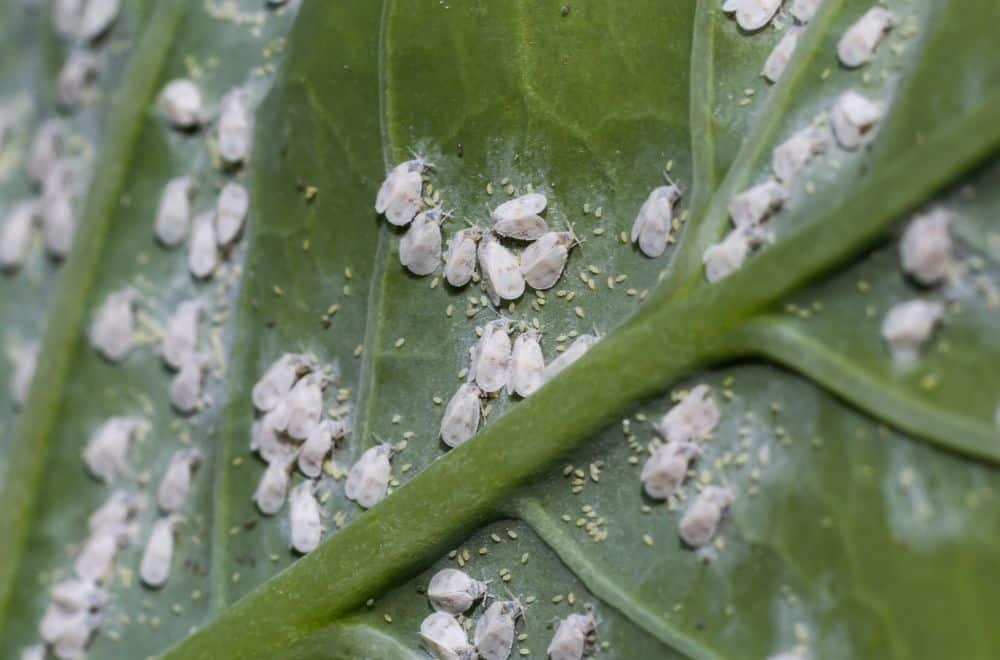
Whiteflies are also found on plant leaves and feed on sap. An infestation will cause the yellowing of your plant leaves.
You can identify these tiny bugs with their white wings and plumpish body. They fly immediately they sense an aggressor or predator.
Whiteflies lay their eggs in batches under plant leaves, and their young ones mature into adults in seven days. The legs are covered in a protective sac that can make killing the pests difficult.
Removing these bugs can also be hard because they hide on the underside of plant leaves.
Use a mixture of water and liquid dishwashing soap as a natural, non-invasive way to eliminate whiteflies. But, the most effective solution for a late-stage infestation is insecticidal soap.
Spray enough insecticidal soap on the leaves and stems. Adding a neem oil spray into the treatment regimen can help get rid of whiteflies for good.
3. Mold Mites
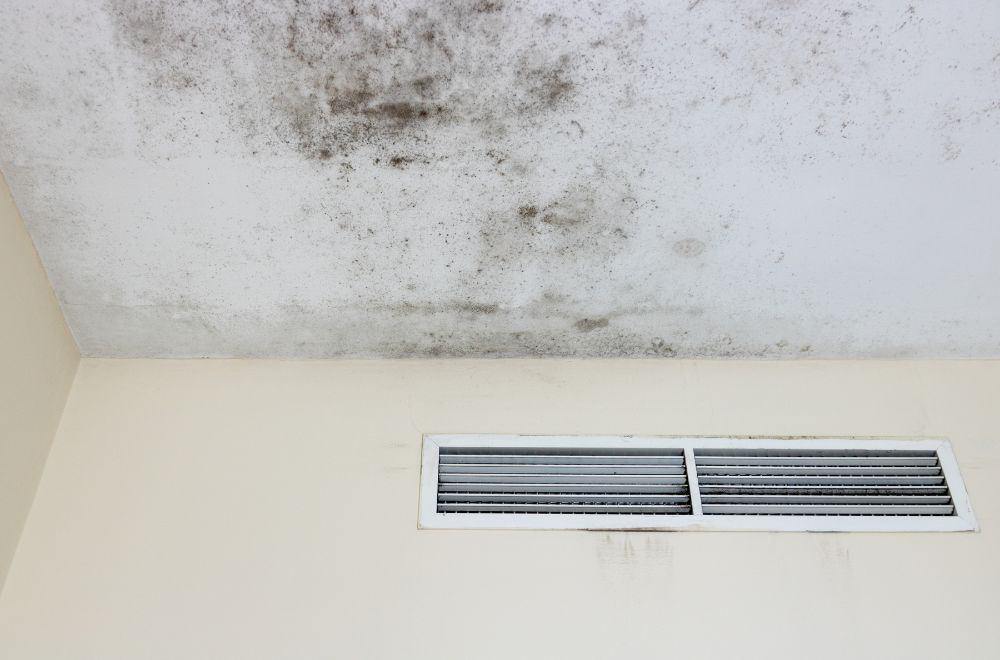
Mold mites get their name from the fact that they feed on mold.
These bugs, which look like small spiders, are attracted to moist, moldy areas such as the washing machine and dishwasher, but they also thrive in animal feed stores and damp yards.
Minimizing excess moisture and mold is the first step in eliminating mold mites. Fix any plumbing issues that may cause dampness in your home or business premise. Invest in the right type of dehumidifier to minimize excess moisture in your house.
4. Dust Mites
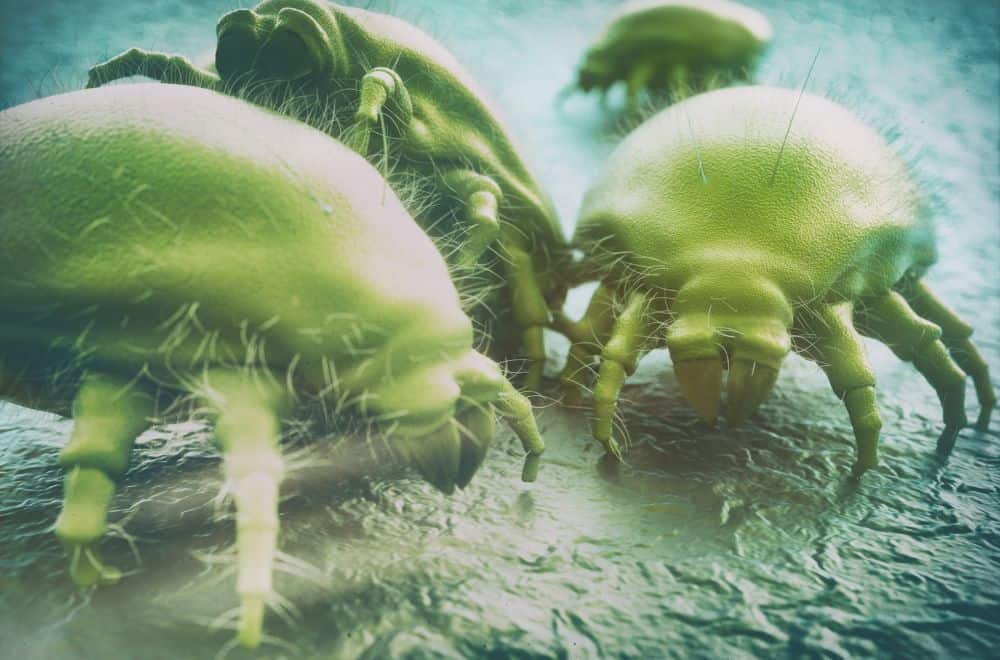
Dust mites are notorious for causing allergic reactions in humans and pets. If you have an allergic reaction breakout in your household, you probably have a dust mite infestation.
Dust mites are extremely tiny, almost invisible to the naked eye. They live in household fabrics such as carpets, curtains, rugs, bed skirts, bedding, and furniture. But they can also latch onto your skin and feed on dead skin cells without your knowledge.
Maintaining good hygiene is the most effective way to prevent a dust mite infestation. If these bugs are already in your house, use an antibacterial cleaner to wipe down debris and dust off surfaces such as countertops, tables, and furniture.
Steam cleaning beddings, rugs, carpets, and furniture can also kill dust mite eggs and prevent further contamination.
5. Aphids

Woolly aphids get their name from their wooly appearance. Excess moisture on plants is a major attractor of these bugs, so bringing your plants out to dry can help minimize the presence of aphids.
Wooly aphids look like cotton balls and can be difficult to get rid of because they live under plant leaves. These are only one type of aphids; there are thousands of aphid species, and they have one thing in common: their ability to destroy plants quickly.
Aphids use their long mouthparts to pierce holes in plants and suck sap, causing wilting and yellowing of the leaves. While species such as wooly aphids are attracted to moisture, aphids can seemingly come out of nowhere and suddenly attack your plants.
These tiny bugs also secret honeydew, which attracts insects that cause a black, powdery mold on the leaves and stems. There are a few methods of getting rid of aphids. One is to remove the bugs by hand, but this can take too long if you have a widespread infestation.
You can also try a natural method, such as using ladybugs to eat the aphids. This method can be expensive and time-consuming. The most effective method is using an insecticide to kill the aphids immediately.
6. Psocids
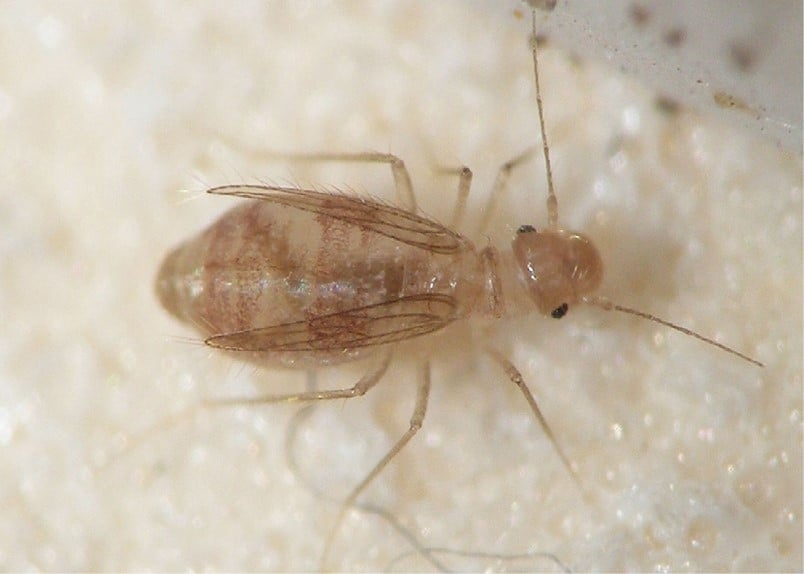
Image Credit: terminix
Pscocids resemble dust mites, but the two bugs are different. Psocids are wingless and feed mainly on fungus and mold, but like dust mites, they can also trigger an allergic reaction in humans and pets.
Bites from these bugs are generally painless and non-serious, but psocid bites can cause breathing difficulties and hives
if you are prone to allergies.
If you are at risk of allergic reactions, you should take protective measures against psocids. For example, wear protective clothing outdoors in areas prone to these bugs, apply insect-repellent oils or lotion, and shower after spending time outside.
One way to get rid of psocids is to vacuum your spaces regularly. Wet or dry mopping can also help to el eliminate these mites. A pet and kid-safe insecticide is one of the best ways to get rid of bugs.
Consider calling a professional pest control service if you have a psocids outbreak in your home or business premise. They have powerful insecticides to eliminate bugs once and for all.
7. Clothes Moth Larvae
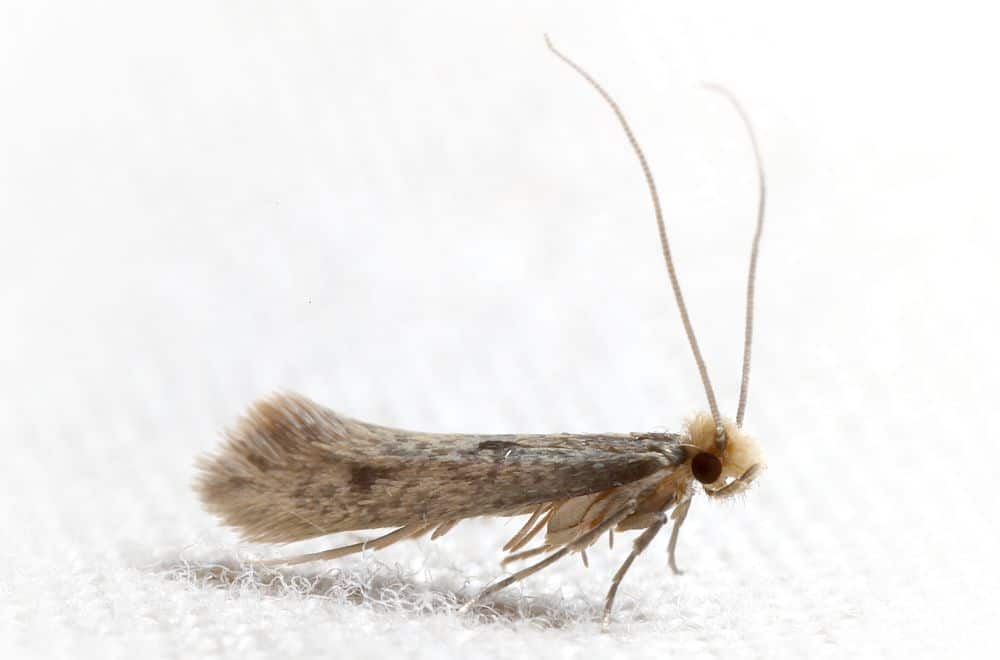
As the name suggests, clothes larvae are mostly found in clothing. These tiny white bugs look like dust or lint and can be invisible to the human eye. They are almost the size of a rice grain and come from cloth moths.
Cloth moths are equally tiny pests whose larvae feed on raw fabric, especially wool, cotton, and silk. Get rid of cloth mites as soon as you notice them on your clothes to avoid extensive damage. A telltale sign of a clothes moth infestation is the appearance of small holes in clothes.
You can do several things to get rid of clothes moth larvae. One, clean your storage areas, such as closets, to eliminate clusters of clothes moth.
Vacuuming upholstery and cleaning affected clothes can help get rid of clothes moths. Use mothball or cedar oil for a natural method, applying in the affected areas.
8. Termites
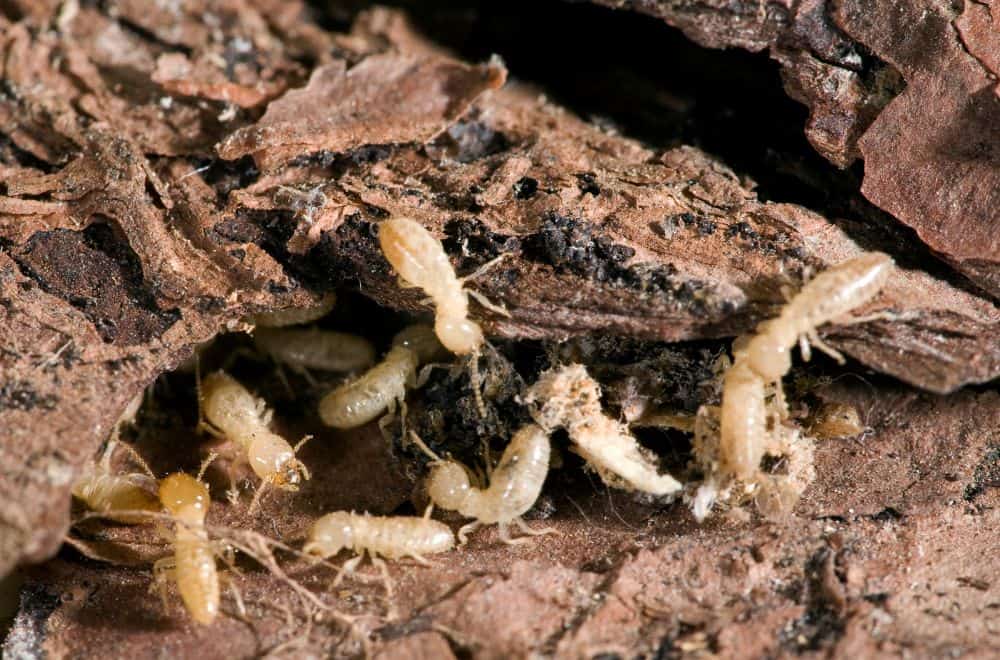
Termites are a nuisance and can be extremely destructive, so you should take action to get rid of them immediately. The most common type of termite is the subterranean termite that looks like dust and lives in large colonies underground.
Termites spend most of their time building extensive mud tunnels and only leave their habitat to look for food in your house. These bugs feed on wood and can damage your furniture within a short time.
They can be difficult to eliminate because they multiply fast and live underground in huge underground colonies. While you can take a few steps to reduce the population of termites on your premise, you are better off calling an expert pest control and management service to eliminate these bugs.
First things first, try to identify the termites’ habitat. You can keep them from entering your house by blocking their mud tunnels.
You should also check for damp areas in and outside your home or business premise. In addition to wood, termites love moisture and thrive in damp places. Minimizing moisture and keeping your property dry can keep termites away.
Traps can also kill termites if you place the bait in the right places. These baits are made of cellulose and a slow-acting insecticide that stops the termite’s growth process.
According to Michael Potter, an extension entomologist at the University of Kentucky College of Agriculture, termite traps are best installed around the perimeter of the building or inside active mud tunnels where the pests reside.
9. Beech Scale
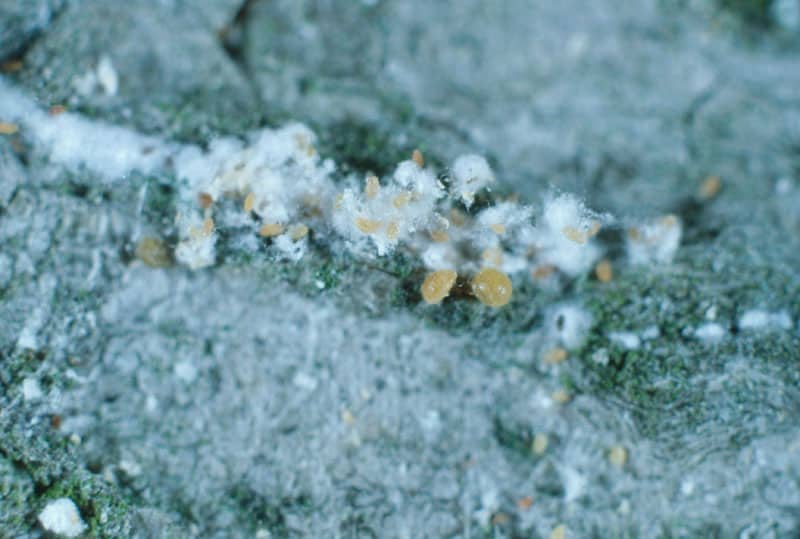
Image Credit: tidcf.nrcan.gc.ca
Beech scale is found on beech trees, feeding on the plant’s sap. This pest is small, dark brown, measuring about one millimeter all around, with a protective shell. Female beech scales lay their eggs under tree leaves, making accessing and eliminating these small bugs hard.
Scales destroy beech trees by feeding on the tree’s sap, causing the leaves to wilt and branches to collapse.
It is best to leave the removal of the beech scale to expert tree care companies. If you notice these pests in your garden, call the experts immediately to avoid further damage to your plants.
10. Cottony Cushion
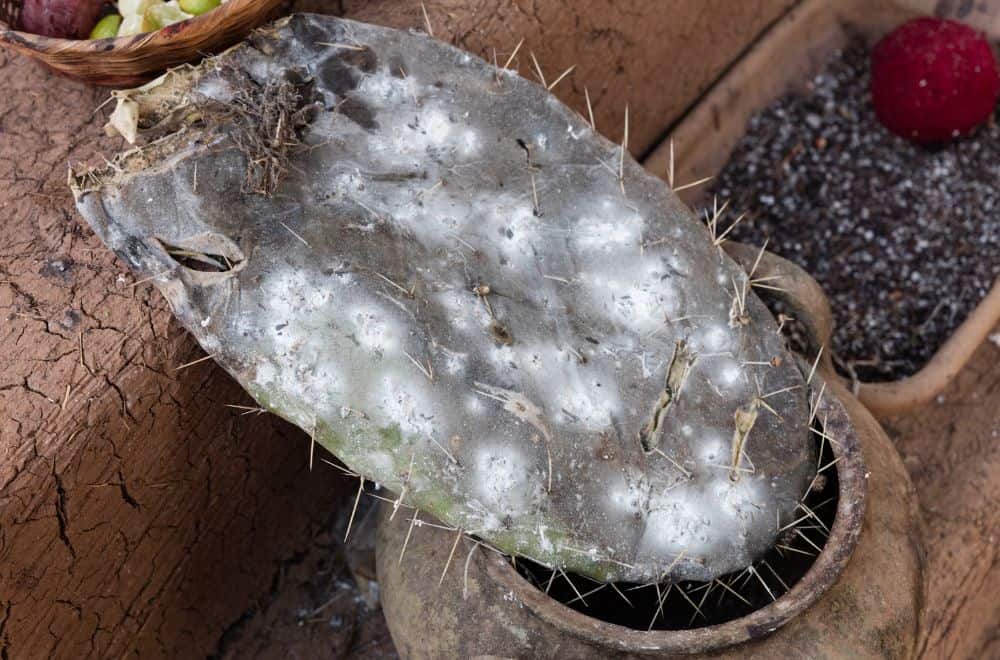
The cottony cushion scale mostly affects citrus trees. As the name suggests, these bugs produce a cotton-looking substance with a waxy protective layer that shields the pest from predators.
Cushion scale feeds on plant sap, causing wilting, weakening the plant, and making it prone to disease and eventual deal. These bugs also secrete honeydew, which attracts other pests, causing more damage to the tree.
This white, dusty bug is stubborn and difficult to remove, so it is best to take good care of your plants to prevent a full-blown infestation.
Check plants regularly for signs of an infestation and get rid of infected branches. Pesticides can help control the cottony cushion scale.
11. Springtails
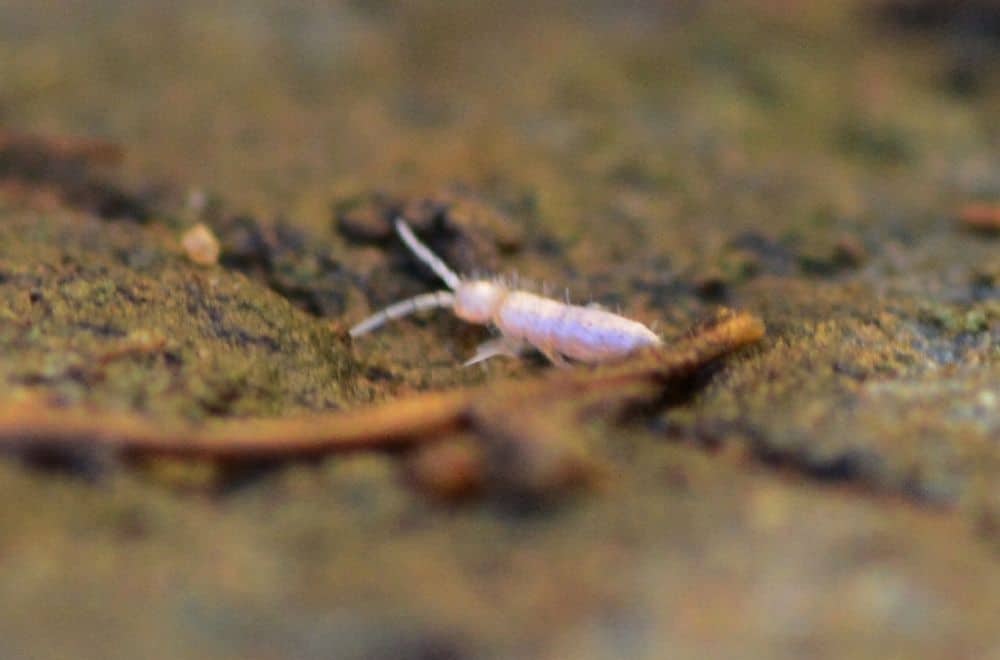
Springtails are small bugs with a tail protruding from their underside. This tail helps the bug spring up and fly away when it senses a predator.
These arthropods live on dead leaves and inside the soil. They help to decompose leaves, releasing much-needed nutrients into the soil.
Although harmless to pets and humans, a springtail infestation can be a nuisance. These bugs feed on other small insects, so eliminating anything that attracts insects is the first step to preventing a springtail infestation.
Springtails are also attracted to moisture. Inspect your home for damp spots or moisture-prone areas and find ways to keep these areas as dry as possible.
12. Pot Worms
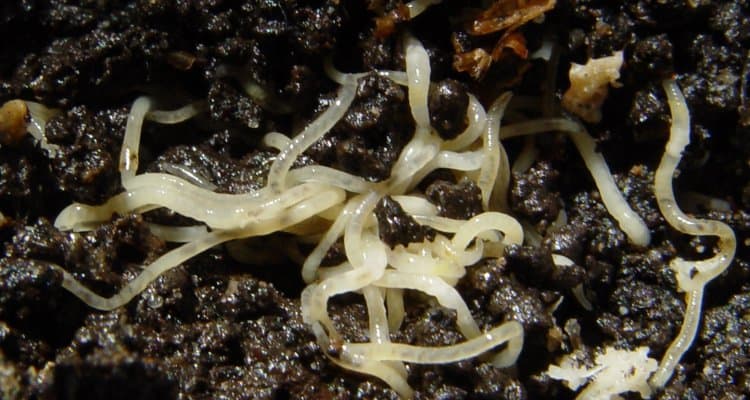
Image Credit: wur.nl
Pot worms also live in the soil and can damage plants if you do not act fast to get rid of them. This tiny white worm has a segmented body and resembles maggots, but they are not harmful to humans or pets; they actually help to improve the soil’s drainage and transfer much-needed nutrients.
A few pot worms in your garden can be beneficial, but an infestation is not a good sign. These otherwise beneficial worms can eat all the organic matter and start feeding on other insects, leaving your soil with inadequate nutrients for plant growth.
13. Spider Mites
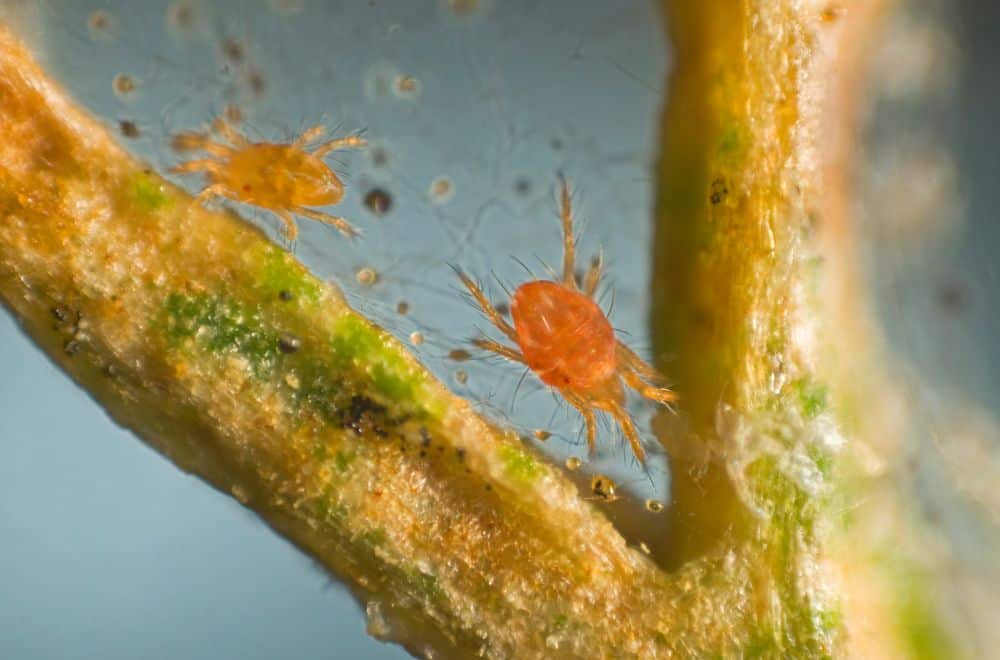
Spider mites are the most common mites found indoors and around the garden. Also known as a web-spinning mite, this pest gets its name from the silk it leaves behind on infested leaves. To the human eye, spider mites look like small, mobile dots on the underside of leaves.
A small population of spider mites should not be a cause of concern. But, these pest mites can multiply fast and become a nuisance, damaging the plants in your garden.
Instead of spraying insecticide indiscriminately, which can kill predators that control the population of spider mites, it is best to use a selection method such as applying insecticide oil or plant-based oils such as garlic oil, neem oil, cinnamon oil, among others.
Tiny white bugs that look like dust and lint are often harmless in small populations. But these pests typically breed fast under the right conditions and can quickly spell trouble in your home or business premises.
It is best to act fast to minimize the conditions that can attract bugs in the first place or as soon as you notice them. Reducing moisture and observing general hygiene can help keep bugs away.
